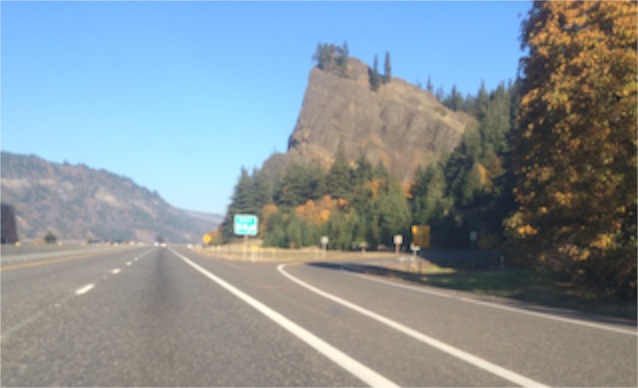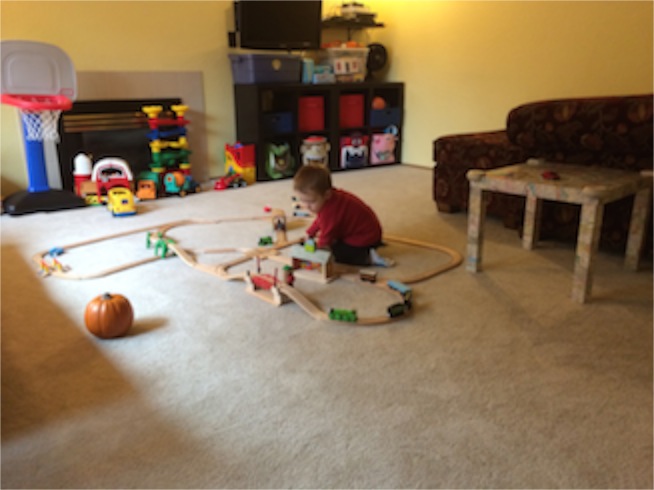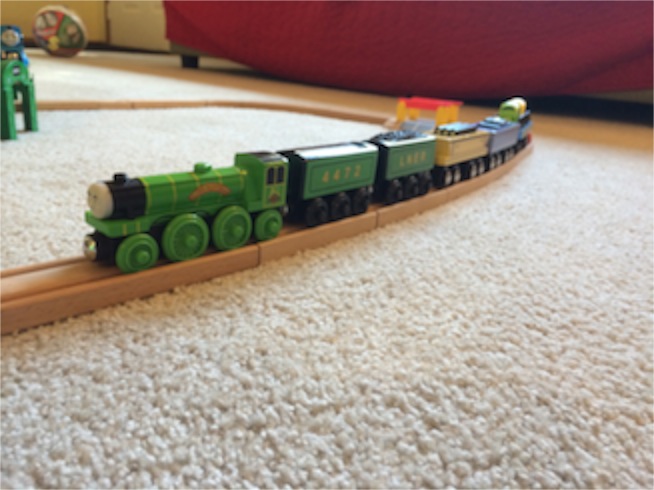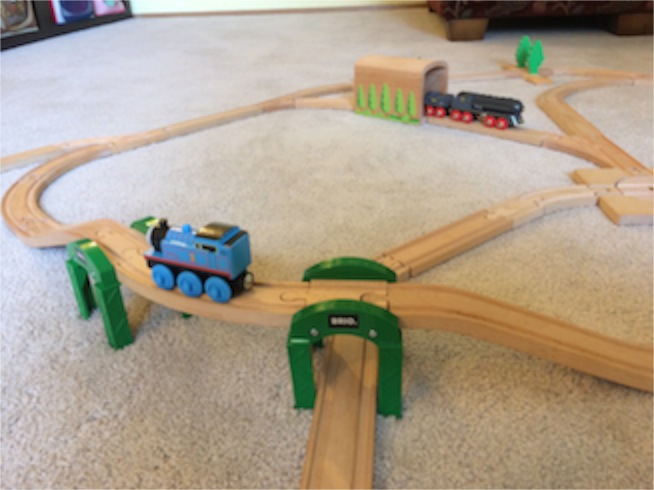Trains
21/10/13 06:23

This is a beautiful time of the year to drive the gorge, as the fall colors are dramatic. The weather has been beautiful and the blue sky and big water enhance the view at every turn. My photographs are a disappointment compared to the beauty that we have witnessed. Today we will exit the gorge and watch the scenery change from pacific rainforest to high plains desert in about 25 miles. By the time we cross the river near Umatilla, we will be in an entirely different ecosystem.
The Columbia is the only route through the cascades navigable by large barges. It has been a hub of transportation since people have inhabited the area. Indigenous peoples use the river both as a source of food, fishing for salmon, and a way to travel through the mountains. The Lewis and Clark expedition used the river as their route to the Pacific. Travelers along the Oregon Trail loaded their wagons onto barges and rafts for the final part of the journey to the rich Willamette River Valley.
Today an Interstate highway runs along the southern shore and good two-lane highways run on the northern shore and higher up the gorge on the southern shore. Rail line run along both shores with several major grain terminals along the way where the grain is loaded into barges for transport to the coast.
The gorge is a great place to watch trains. There is a lot of freight that is transported through the corridor. There are several major railroad bridges across the Columbia that are themselves engineering masterpieces.
Perhaps we are paying more attention to the trains this trip because we have had the joy of visiting with our grandson. He is really into trains these days. Yesterday morning as we walked in downtown Portland, we paused to watch the Max, a commuter train, make its way through the city streets. Our grandson informed us that it was an electric city train. It is not a diesel train. It is not a steam train. It is not a freight train. It is not an Amtrak train.
At his home he has a good collection of wooden track and quite a bit of rolling stock to move along the track. The Swedish company Brio has been making wooden train sets since 1958. They still make quality components, but these days there are lots of other companies who make compatible products. Brio licenses its toys for manufacture by other companies in some places and other companies also make tracks and rolling stock that are very similar. Nuchi train sets retain the classic simplicity of the Brio sets and are compatible so that the tracks can all be interconnected for play. In the United States the Fisher Price company has obtained the license for the popular Thomas the Tank Engine series and makes their trains so that the run on the tracks, though they are a bit taller than the Brio and Nuchi trains, so they don’t fit into all of the tunnels and underpasses of the other sets.


The stories are based on real railroad engines that operated in England. Thomas is a light engine with tanks to hold extra water for more range without having to fill with water. Other characters are based on other famous trains. Spencer is based on the engine that holds the record for the fasted steam-powered train. The flying Scotsman is a large and very fast engine that pulls both a coal tender and a water take for a range of over 400 miles with speeds in excess of 100 miles per hour. There are light, medium and large engines in the series. Our grandson knows more about the classes of British steam engines than we.

So we think of our grandson as we travel and enjoy the dramatic scenery of the trip. Even though our journey leads us far from his home, we continue to revel in the miracle of love that transcends all boundaries and distances.